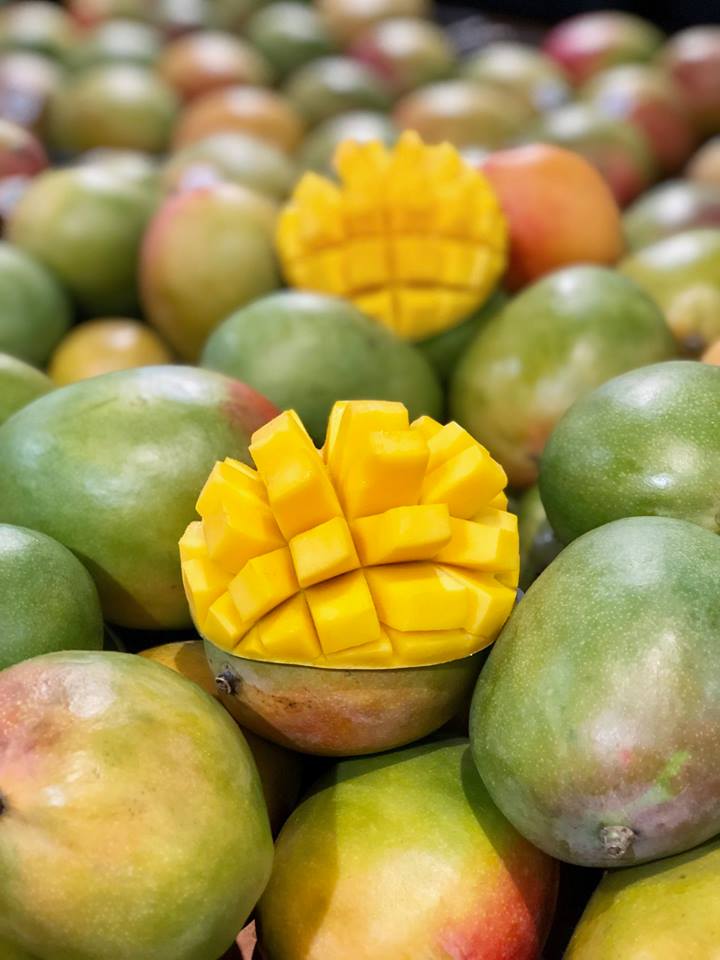UNITED STATES—I love the summer months, but I also hate the summer months. I hate summer because of the intense heat, but I love summer for the abundance of variety that comes with fruits and vegetables. The summer months kick-off the arrival of many fruits that I have come to adore. I mean peaches, apricots, nectarines, plums, Plutos, cherries, pineapple, watermelon, honeydew, honey rocks, cantaloupe, kiwi, passion fruit, lychee, papaya, corn and so much more.
I know I leaded this column talking about fruits and vegetables, but I have to admit the focus is more on fruits, particularly those that are hard to find during the fall, winter and spring months. For starters, ask anyone what my favorite fruit is and they will tell you without hesitation that its cherries. Don’t ask me why, but I love this tart, yet sweet (the dark the cherry the sweeter it is) fruit. Yes, we get shipments of cherries around December, but the season truly doesn’t kickoff in my opinion till mid-June early July.
This is the time where those cherries have ripened and are full of flavor. You know how people are willing to spend like $50 for the smallest minuscule of saffron; I’d spend $100 for a pound of cherries. It is indeed my one weakness when it comes to food that I have no problem admitting to. Am I a fan of the pit inside the fruit, no, but once you’ve eaten pounds of cherries the way that I have, the pit becomes second nature to you.
My same love goes for apricots. Similar to a peach, they are smaller in size; some can be quite massive depending on your local farmer’s market that you visit. This is another fruit where the darker the skin the better, however, you don’t want your apricots to be too dark orange. Why? They have over-ripened at this point, and can be quite mushy. You don’t want that in your fruit. So touch the apricot to ensure it still has some firmness to it. People might think it’s weird to smell your fruit and touch it, but disregard their thoughts. There is no reason feeling than purchasing fruit, and finding out when you get home that it’s old.
This has indeed transpired to me and it’s no laughing matter, especially when you’re dealing with fruits like watermelon, cantaloupe, pineapple, honeydew, honey rocks and over members of the melon family. You can’t see the inside of the fruit, you can gauge things based on the color outside its shell/husk and the smell. Watermelon is always great to go for the darker colored ones. With honeydew and cantaloupe smell matters. You want it to smell sweet, but not overly sweet and of course if the outside looks discolored or feels soft that is a piece of fruit you don’t want. Pineapple, look at the leaves and you want a bright color to it.
When it comes to kiwi, passion fruit, lychee, papaya and so many others, it’s about texture. The fruit should have some firmness to it, but you don’t want it too firm or too soft. This is particularly important with mangoes as firmness, smell and color are all important to picking out the right one. It should have a redish-orange color, but hints of green. If the mango looks yellow, it has over-ripened and is not a good choice.
Of course, summer is all about the fruit salad, however, over the years, I’ve come to realize not all fruits pair well. You make think all melons are great together, but they are NOT. Cut and cube the watermelon, cantaloupe, honey dew, honey rocks separately and allow your guests to add the fruits to their bowl individual. Watermelon can cause the other fruits to get mushy and soggy. Grapes are great for crunch, and stone fruits should stick together with stone fruits. When it comes to berries (raspberries, blackberries, blueberries and strawberries) those fruits are better suited when they play together.
The thing about fruit is that it’s a natural sugar and it is sweet. So we all have a sweet tooth, why not cater it to something that is healthier for you, than putting the focus on treats that are processed and have tons of added sugars to them.
Written By Kelsey Thomas






